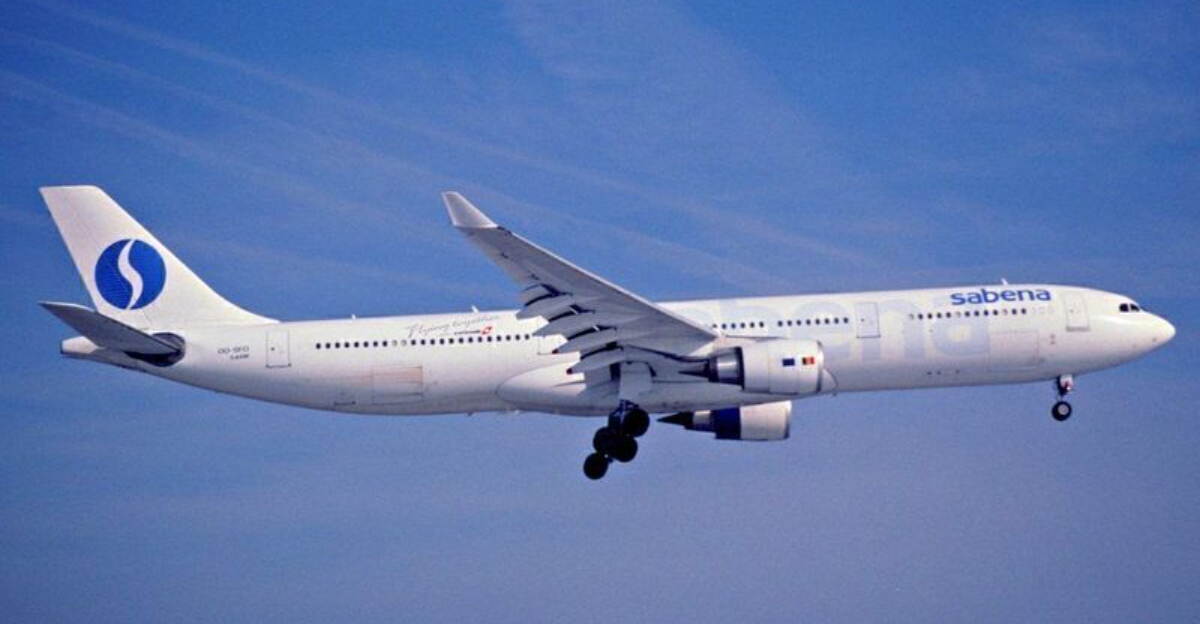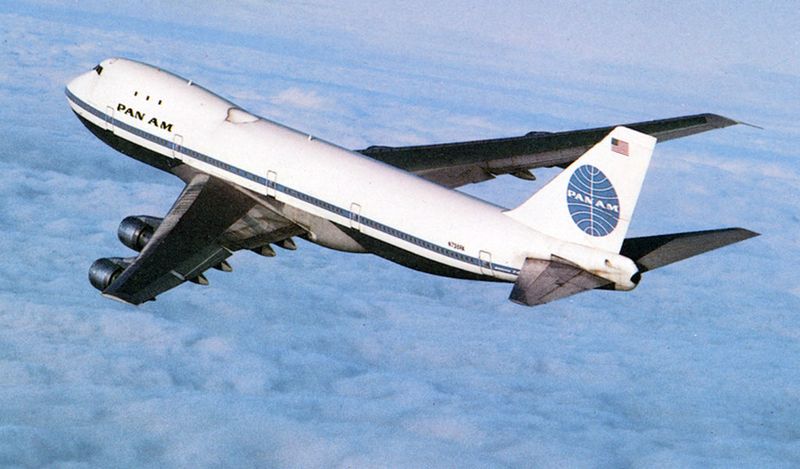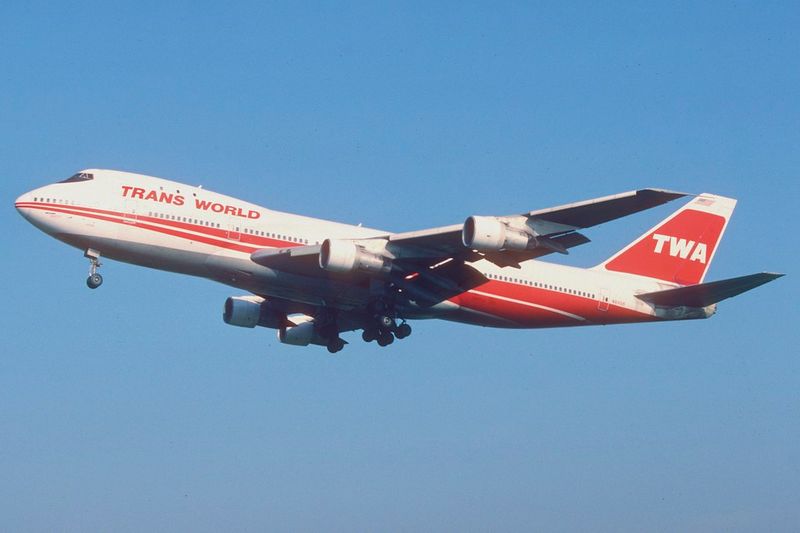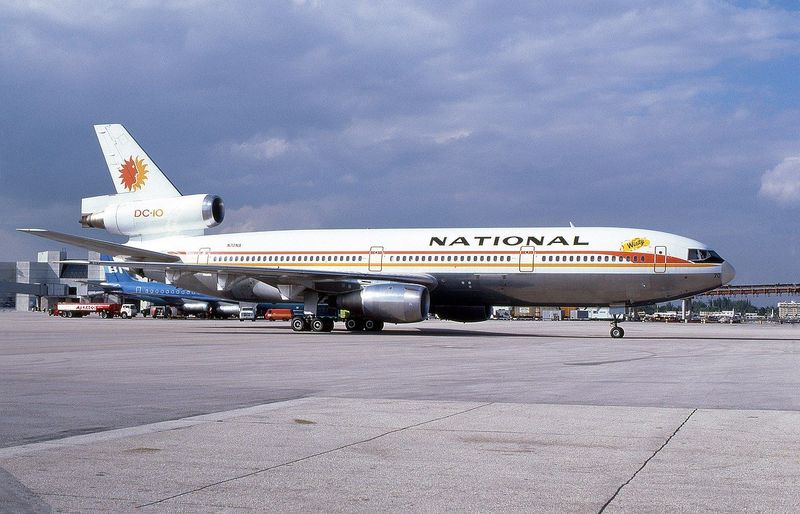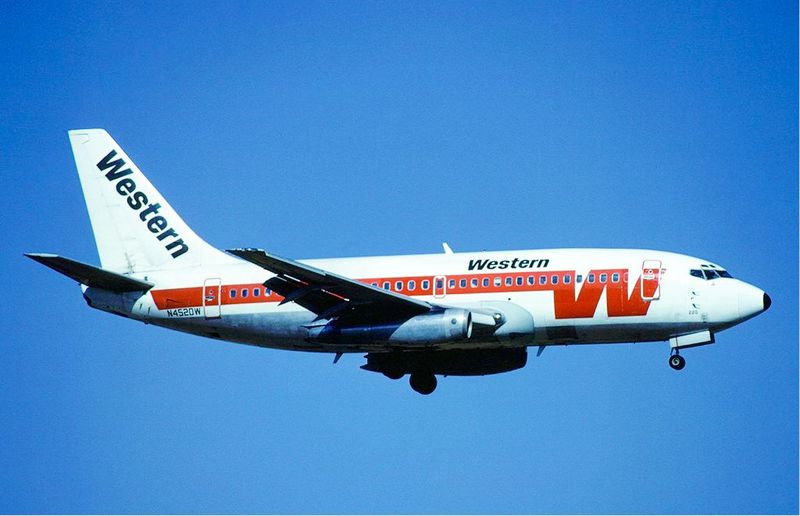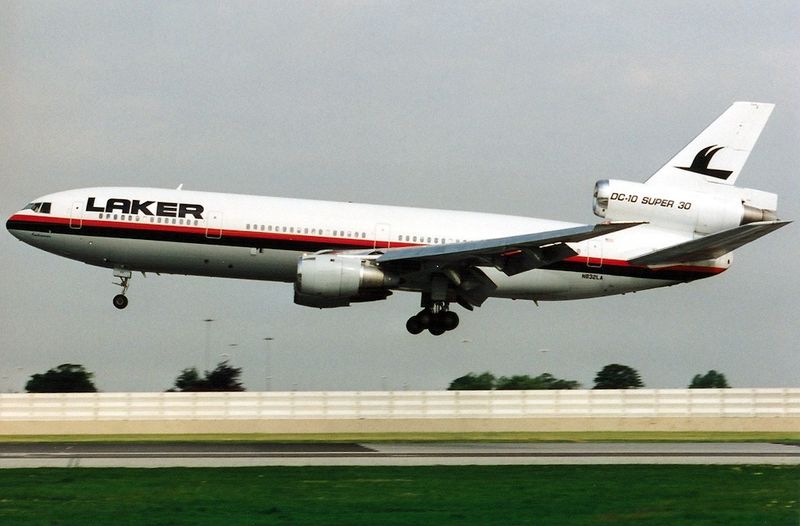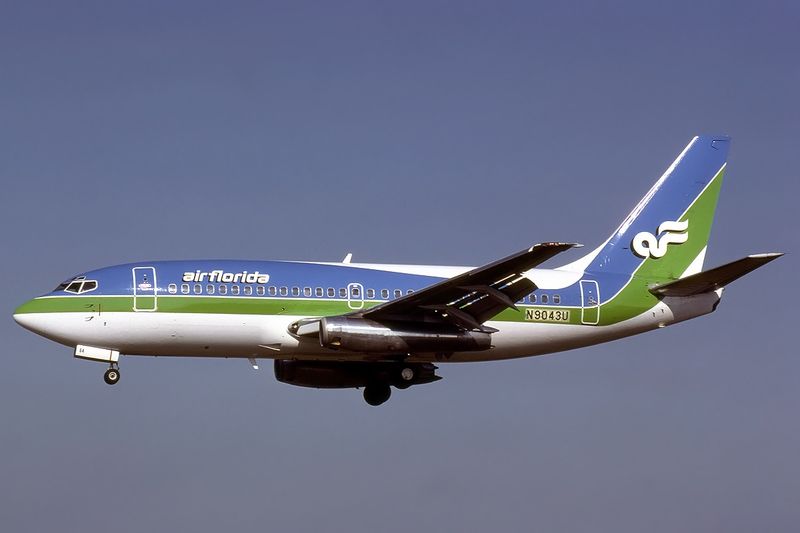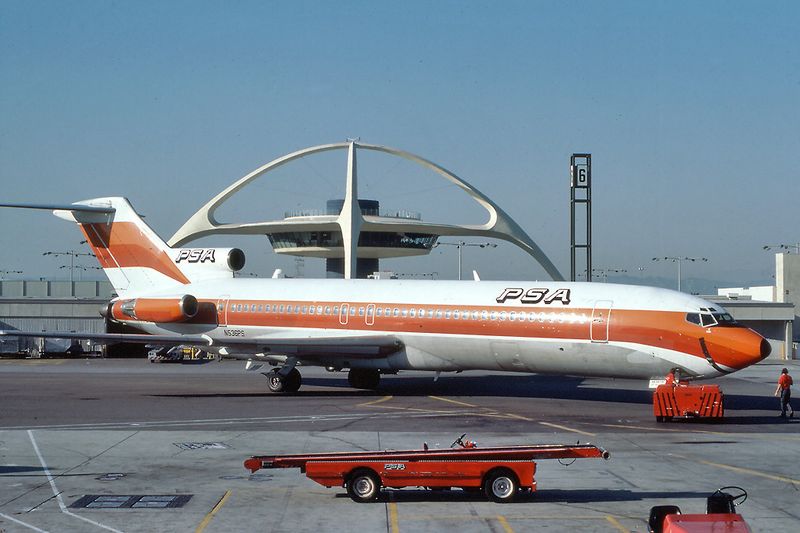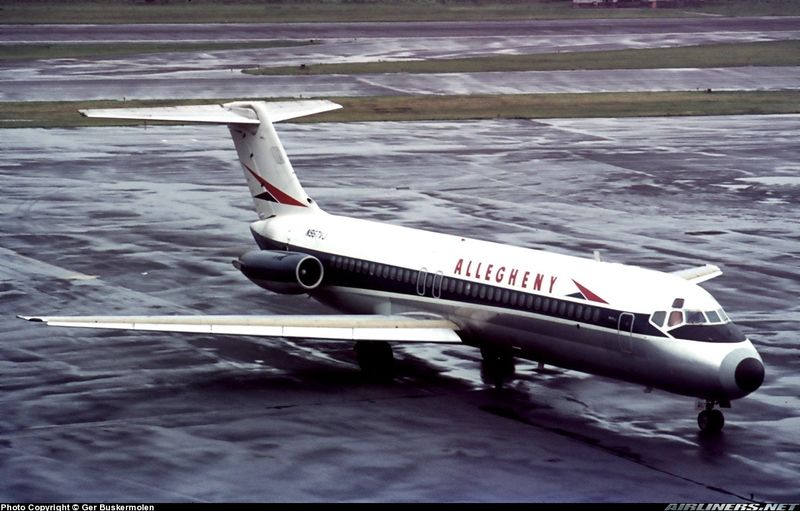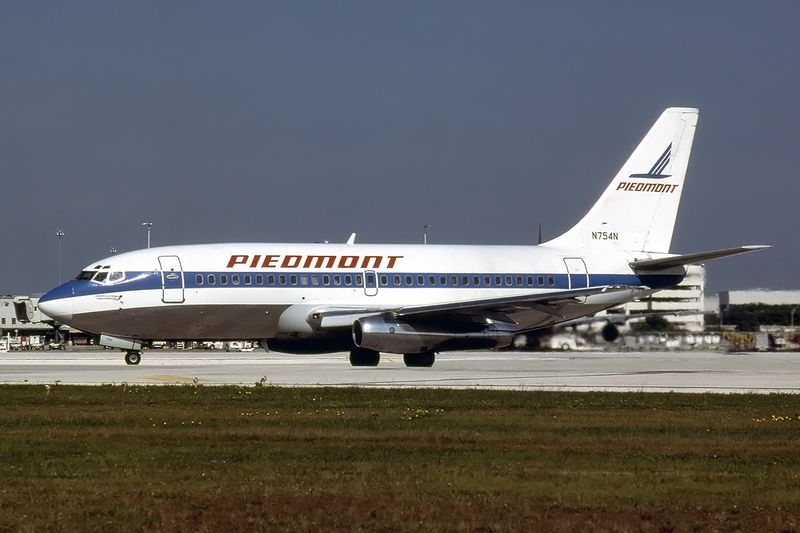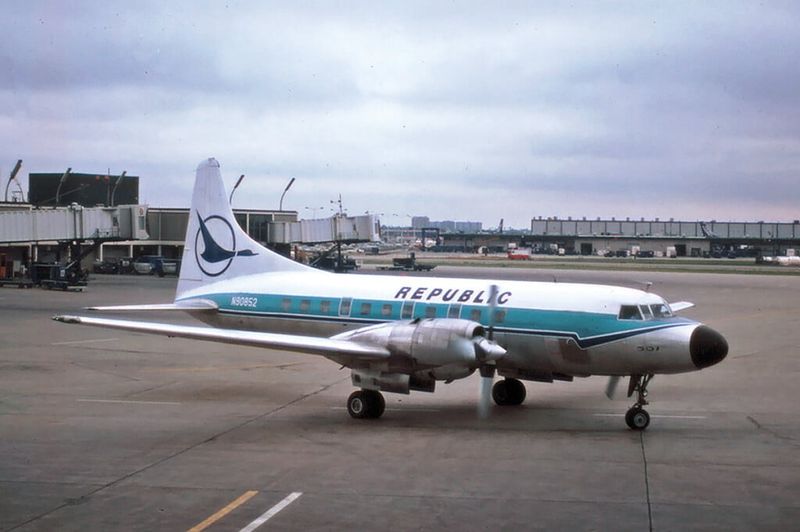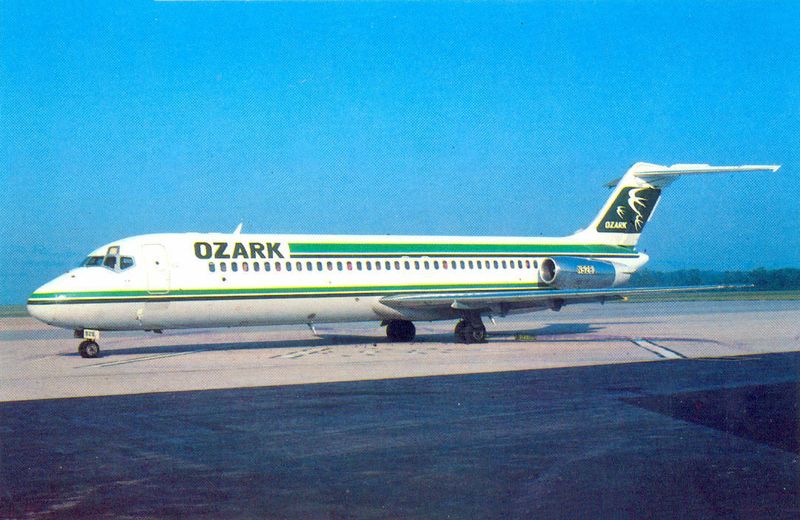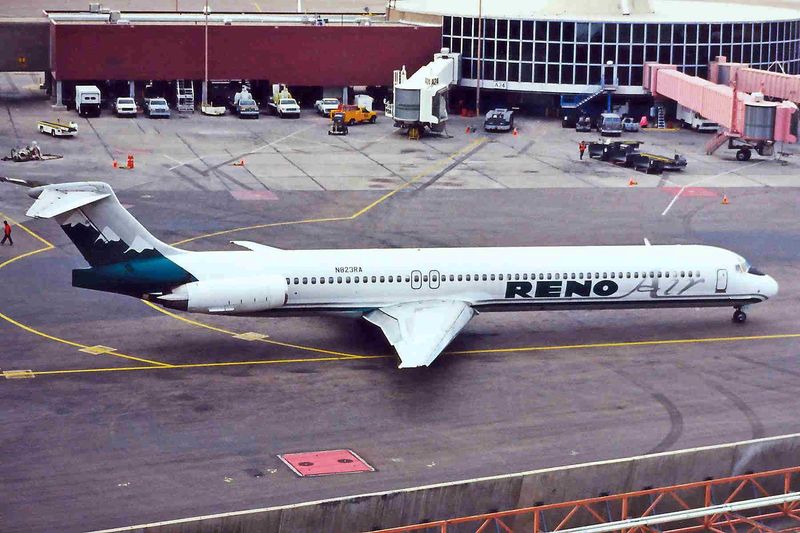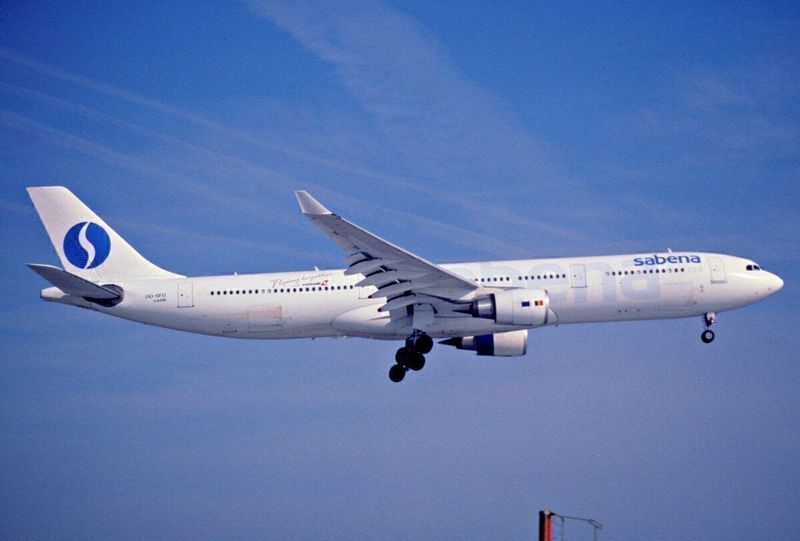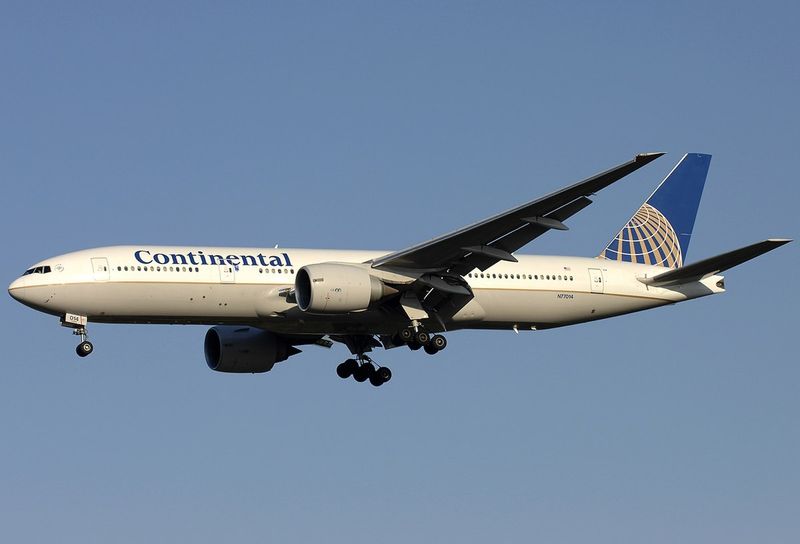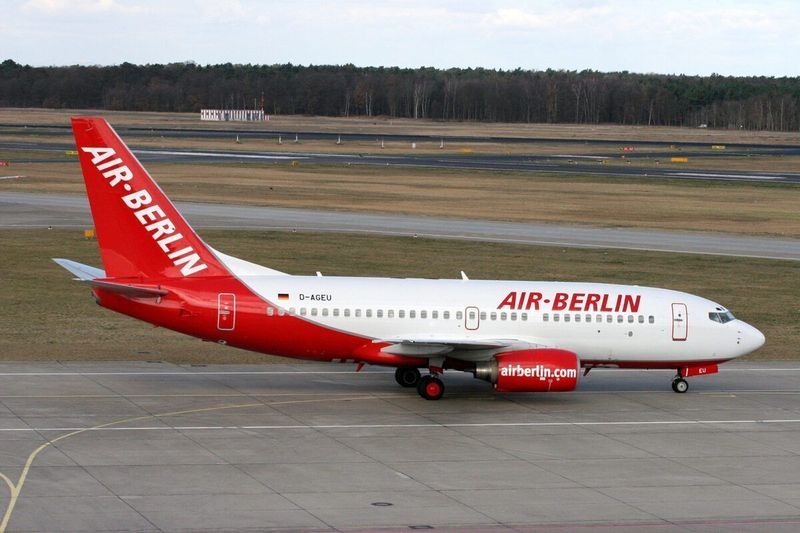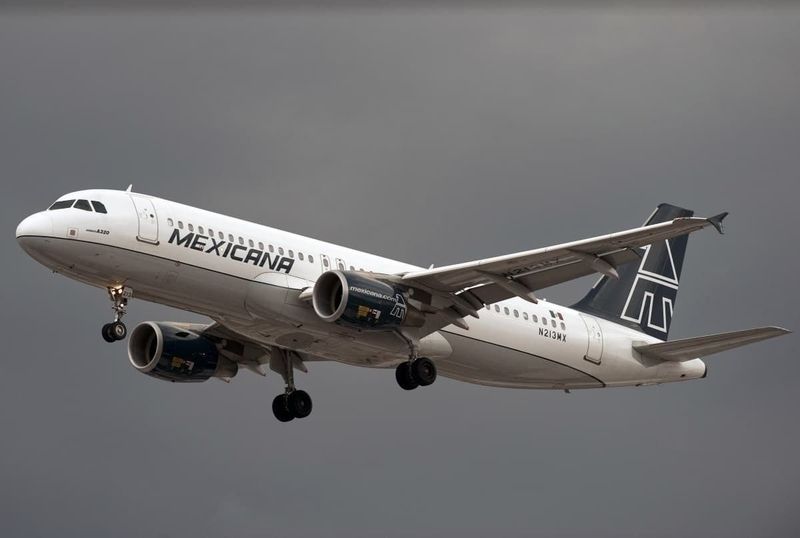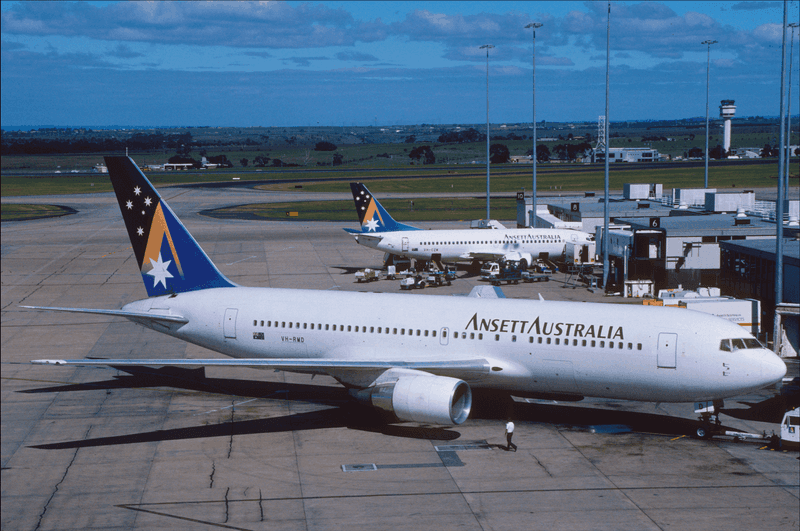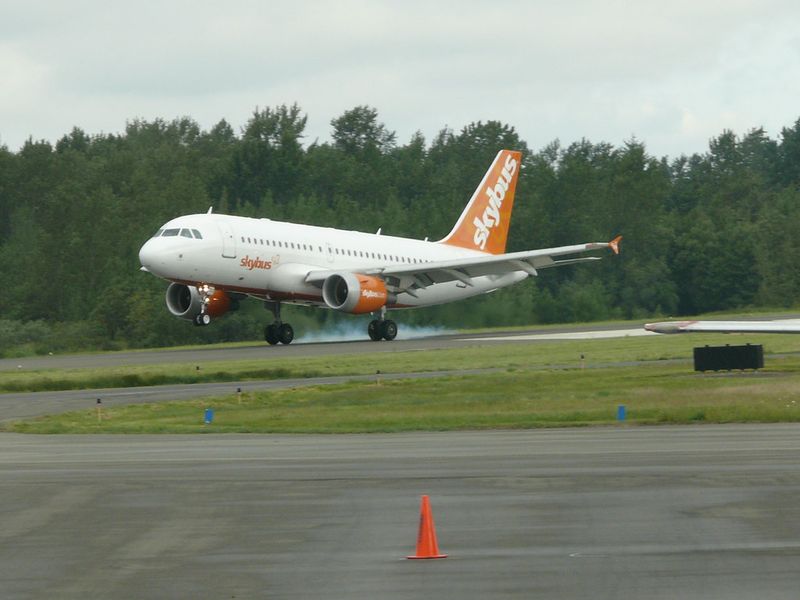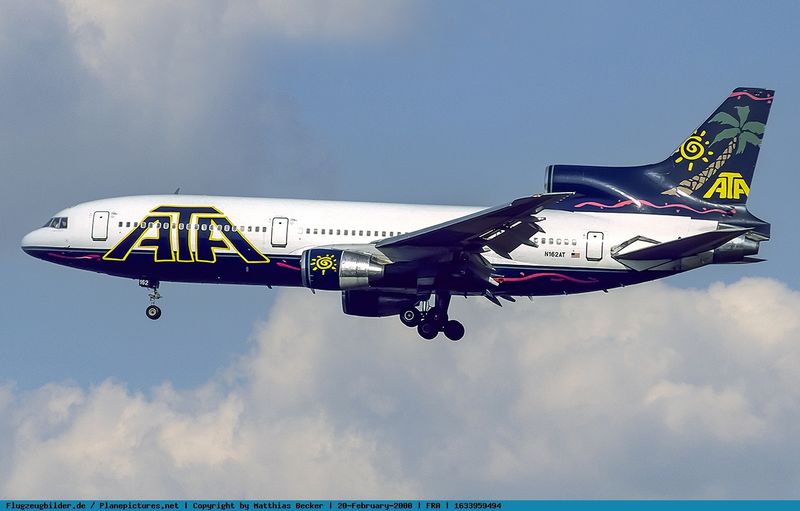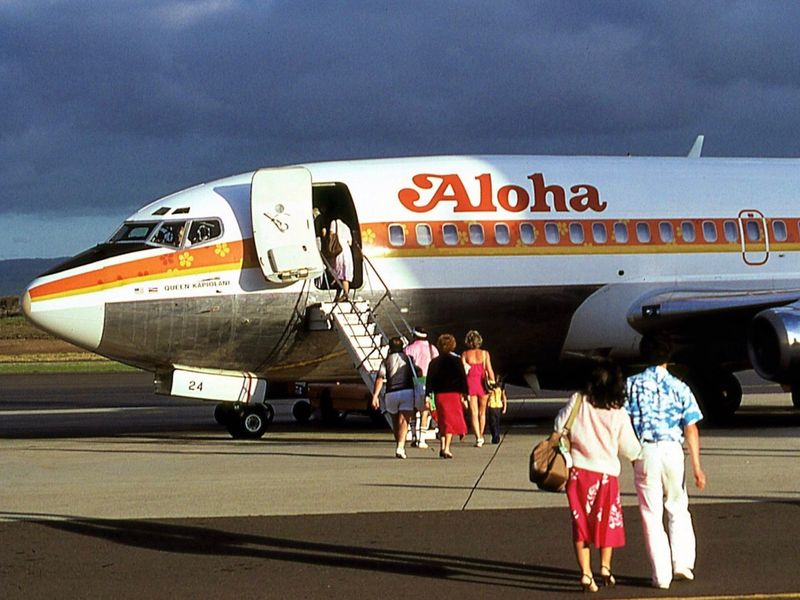The aviation industry has seen its fair share of iconic airlines come and go, leaving behind tales of innovation, glamour, and sometimes tragedy.
This blog post explores 24 airlines that once graced the skies but have since disappeared, each with its own unique story. From trailblazers of the jet age to budget carriers with a dream, these airlines have left a lasting impact on the world of travel.
Join us as we reminisce about these flying legends and their contributions, challenges, and eventual downfalls.
1. Pan American World Airways (Pan Am)
Pan American World Airways, or Pan Am, was once the epitome of luxurious international travel. Known for its iconic blue globe logo and pioneering efforts, Pan Am set the standard for global aviation.
In its prime, the airline offered passengers a glamorous experience, complete with fine dining and attentive service. However, despite its prestigious reputation, Pan Am faced financial difficulties in the face of rising competition and changing market dynamics.
These challenges eventually led to its downfall in 1991. Today, Pan Am is remembered as a symbol of the golden age of air travel.
2. Trans World Airlines (TWA)
Trans World Airlines, known as TWA, was a major player in the U.S. aviation industry. With its roots in the early days of air travel, TWA became known for its extensive domestic and international routes.
The airline was synonymous with transcontinental flights and offered a blend of comfort and efficiency. However, financial struggles and competition led to its acquisition by American Airlines in 2001.
TWA’s legacy lives on through its significant contributions to aviation history and its memorable branding, which included a distinct red-and-white color scheme and a sense of adventure.
3. Eastern Air Lines
Eastern Air Lines was once a powerhouse in U.S. aviation, especially prominent in the eastern United States. Known for its impeccable service and robust network, Eastern became a household name.
However, the airline faced financial turmoil and labor disputes in the 1980s, leading to its decline. By 1991, Eastern had ceased operations, leaving behind a legacy of innovation and ambition.
Despite its challenges, the airline is remembered for its important role in connecting major U.S. cities and its attempts to expand domestically and internationally during its heyday.
4. Braniff International Airways
Braniff International Airways was known for its bold and colorful branding, reflecting the flamboyant era of the 1960s and 1970s. With unique aircraft liveries and a focus on style, Braniff became a memorable brand in aviation.
It offered passengers a distinct flying experience, emphasizing creativity and flair. Despite its innovations, Braniff faced financial difficulties and intense competition, ultimately leading to its demise in the 1980s.
The airline’s legacy lives on through its groundbreaking marketing strategies and the impact it had on airline aesthetics and passenger experience.
5. National Airlines (USA)
National Airlines was a significant domestic carrier during the 1960s and 1970s in the United States. With its catchy “Isn’t it time you flew National?” tagline, the airline captured the hearts of many travelers.
Known for its friendly service and extensive route network, it played a pivotal role in connecting various U.S. cities. However, the airline struggled financially in its later years, facing economic turbulence and increased competition.
Eventually, National Airlines was absorbed by Pan Am in the 1980s, marking the end of its independent operations.
6. Western Airlines
Western Airlines was a prominent carrier based in Southern California, known for its catchy slogan, “The Only Way to Fly.” With routes extending throughout the western United States and beyond, Western Airlines gained a reputation for reliable service.
The airline’s laid-back image resonated with travelers seeking a relaxed flying experience. However, as the aviation industry evolved, Western faced challenges in the competitive market.
In 1987, it merged with Delta Air Lines, marking the end of its independent operations. Western Airlines left a lasting impact on the travel landscape of the western U.S.
7. Laker Airways
Laker Airways revolutionized the airline industry by pioneering low-cost, long-haul flights in the 1970s. Founded by Sir Freddie Laker, the airline offered affordable transatlantic travel, making international destinations accessible to many.
With its “Skytrain” service, Laker Airways challenged traditional carriers by offering no-frills travel at competitive prices. Despite initial success, the airline struggled with financial pressures and competition from larger carriers.
By 1982, Laker Airways ceased operations, but its legacy lived on, inspiring the growth of the budget airline model that we see today.
8. Air Florida
Air Florida was a low-cost carrier that captured attention with its unique routes and competitive pricing. With sunny Florida as its hub, the airline offered convenient services to various destinations.
However, Air Florida is perhaps best remembered for a tragic crash in 1982 that deeply impacted the airline. Despite efforts to recover, the financial burden proved insurmountable, leading to its closure in 1984.
The airline’s story serves as both a cautionary tale and a reminder of the complexities of maintaining safety and sustainability within the competitive aviation industry.
9. Pacific Southwest Airlines (PSA)
Pacific Southwest Airlines, affectionately known as PSA, was a beloved regional carrier on the U.S. West Coast. With its iconic smiley face logo, PSA was known for its cheerful service and affordable fares.
The airline played a crucial role in popularizing air travel in California, offering convenient connections between key cities. However, as competition intensified, PSA struggled to maintain its independence and was eventually acquired by USAir in 1988.
Despite its disappearance, PSA remains a cherished part of California’s aviation history, remembered for its friendly service and community engagement.
10. Allegheny Airlines
Allegheny Airlines was a key player in the Northeast U.S. aviation market. Known for connecting smaller cities to major hubs, Allegheny built a solid reputation for reliability.
The airline’s operations were integral to the region’s transportation network, providing vital links for business and leisure travelers. Over time, Allegheny evolved, eventually becoming part of USAir, now known as American Airlines.
Although the Allegheny name has faded from public memory, its contributions to regional air travel remain significant, especially in enhancing connectivity and accessibility within the northeastern corridor.
11. Piedmont Airlines
Piedmont Airlines was a well-regarded carrier in the eastern United States, known for its customer service and punctuality. Operating out of its hub in North Carolina, Piedmont developed a loyal customer base.
The airline’s focus on regional routes and community involvement made it a favorite among travelers. However, as the airline industry consolidated, Piedmont was acquired by USAir in 1989.
Despite its absorption, Piedmont’s legacy continues through its impact on regional aviation and the fond memories of those who flew with its “Piedmont Pride.”
12. Republic Airlines
Republic Airlines was formed through mergers of several smaller carriers, creating a strong presence in the Midwest. Known for its efficient feeder services, Republic connected smaller towns to larger aviation hubs.
The airline’s focus on regional connectivity made it an essential part of many travelers’ itineraries. However, the competitive dynamics of the aviation industry prompted Republic to merge with Northwest Airlines in the 1980s.
Although Republic Airlines no longer exists, its legacy of fostering regional air travel is remembered by those who valued its services.
13. Ozark Air Lines
Ozark Air Lines was a regional airline renowned for its reliability and service excellence across the Midwest. With its base in St. Louis, Ozark became synonymous with connecting smaller communities to major cities.
The airline’s commitment to customer satisfaction garnered a loyal following. However, as the industry evolved, Ozark merged into Trans World Airlines in 1986, ending its independent journey.
Despite this, the airline’s dedication to regional connectivity and its distinctive livery left a lasting impression on the communities it served.
14. Reno Air
Reno Air was a small but significant carrier primarily serving the Reno area and other western U.S. destinations. Known for its convenient schedules and competitive fares, Reno Air quickly gained popularity among travelers in its region.
The airline’s focus on customer service and regional routes made it a preferred choice for locals. However, the competitive airline environment led to its acquisition by American Airlines in 1999.
While Reno Air’s independent operations ceased, the airline remains a part of the region’s aviation heritage, remembered for its personalized service and community focus.
15. Sabena
Sabena, the Belgian national airline, was an iconic name in European aviation. Known for its comprehensive network and quality service, Sabena connected Belgium to various international destinations.
Despite its longstanding history, financial woes plagued the airline, leading to its bankruptcy in 2001. Sabena’s story is one of both prestige and challenges, reflecting the complexities of maintaining a national carrier.
Although Sabena no longer operates, its legacy lives on in the memories of its passengers and its impact on Belgian aviation, serving as a cornerstone of the country’s travel industry.
16. Continental Airlines
Continental Airlines was a prominent U.S. carrier with a storied history dating back to the 1930s. Known for its extensive routes and innovative services, Continental became a significant player in the aviation industry.
The airline’s commitment to customer satisfaction and operational efficiency earned it a loyal following. However, in 2010, Continental merged with United Airlines, ending its independent operations.
Continental’s legacy continues through its impact on the industry, remembered for its contributions to air travel innovation and its role in shaping the modern aviation landscape.
17. Air Berlin
Air Berlin was once Germany’s second-largest airline, known for its extensive European and intercontinental routes. The airline gained popularity for its affordable fares and flexible travel options.
However, financial struggles and intense competition led to its eventual demise in 2017. Air Berlin’s story reflects the challenges faced by many airlines in balancing growth and profitability.
Although the airline no longer operates, its legacy is remembered by German travelers and its impact on the country’s aviation industry, as it paved the way for new travel possibilities and competitive pricing models.
18. Arrow Air
Arrow Air was an American charter airline primarily known for its military and cargo services. The airline gained notoriety due to a tragic crash in 1985, which raised concerns about its safety practices.
Despite efforts to continue operations, financial and regulatory challenges led to its eventual shutdown. Arrow Air’s history serves as a cautionary tale about the importance of rigorous safety standards in aviation.
While the airline is no longer in operation, its story remains a part of aviation history, highlighting the critical nature of safety and reliability in air travel.
19. Mexicana de Aviación
Mexicana de Aviación, one of Mexico’s oldest airlines, was a cornerstone of Latin American aviation. Known for its extensive network and quality service, Mexicana connected Mexico to destinations worldwide.
Despite its prominence, financial struggles led to its bankruptcy in 2010, leaving a significant gap in the region’s aviation market.
Mexicana’s legacy is remembered for its contributions to the growth of air travel in Latin America and its role in fostering cross-border connections.
The airline’s history underscores the challenges of maintaining competitiveness and financial stability in the dynamic aviation industry.
20. Ansett Australia
Ansett Australia was a major player in the Australian aviation scene, widely recognized for its extensive domestic and international routes. With a strong focus on customer service, Ansett developed a loyal customer base.
However, financial difficulties and a changing market led to its dramatic collapse in 2001. Ansett’s story is illustrative of the challenges faced by airlines in adapting to evolving market conditions.
Despite its closure, Ansett remains a significant part of Australia’s aviation history, remembered for its role in shaping the country’s air travel landscape and its memorable branding.
21. ValuJet Airlines
ValuJet Airlines was a budget carrier known for its low-cost travel options. The airline quickly gained popularity for its no-frills service and competitive pricing.
However, a tragic crash in 1996 severely damaged its reputation, leading to increased scrutiny and regulatory challenges. Despite rebranding as AirTran Airways, the airline struggled to recover fully from its past controversies.
ValuJet’s story highlights the importance of maintaining rigorous safety standards and the impact of public perception on an airline’s success. The airline’s legacy is a reminder of the delicate balance between cost and safety in aviation.
22. Skybus Airlines
Skybus Airlines entered the aviation scene with a bold promise of ultra-low fares, aiming to revolutionize budget air travel.
The airline’s innovative approach included charging for every onboard service, allowing passengers to customize their travel experience economically.
However, despite its appealing pricing model, Skybus struggled with financial sustainability in a competitive market. The airline ceased operations in 2008, after just two years.
Skybus’s story reflects the challenges of maintaining profitability while offering deeply discounted fares. Its legacy lives on as a testament to the complexities of the budget airline industry.
23. ATA Airlines (American Trans Air)
ATA Airlines, originally known as American Trans Air, was well-regarded for its charter and scheduled services. Known for its colorful liveries and affordable fares, ATA connected numerous U.S. destinations with both leisure and business travelers.
However, economic pressures and increased competition led to its bankruptcy in 2008. Despite its closure, ATA is remembered for its contributions to the charter flight industry and its role in making air travel accessible to a broader audience.
The airline’s history highlights the challenges of sustaining operations amidst changing economic conditions and industry dynamics.
24. Aloha Airlines
Aloha Airlines was more than just a carrier; it was a symbol of Hawaiian hospitality and island connection. Known for its friendly service and focus on inter-island travel, Aloha served as a vital link across the Hawaiian Islands.
The airline’s dedication to customer satisfaction and community engagement endeared it to many locals and visitors. However, financial difficulties and intense competition led to its closure in 2008.
Aloha Airlines is fondly remembered for its role in Hawaii’s aviation history, embodying the spirit of the islands and the warmth of its people.
